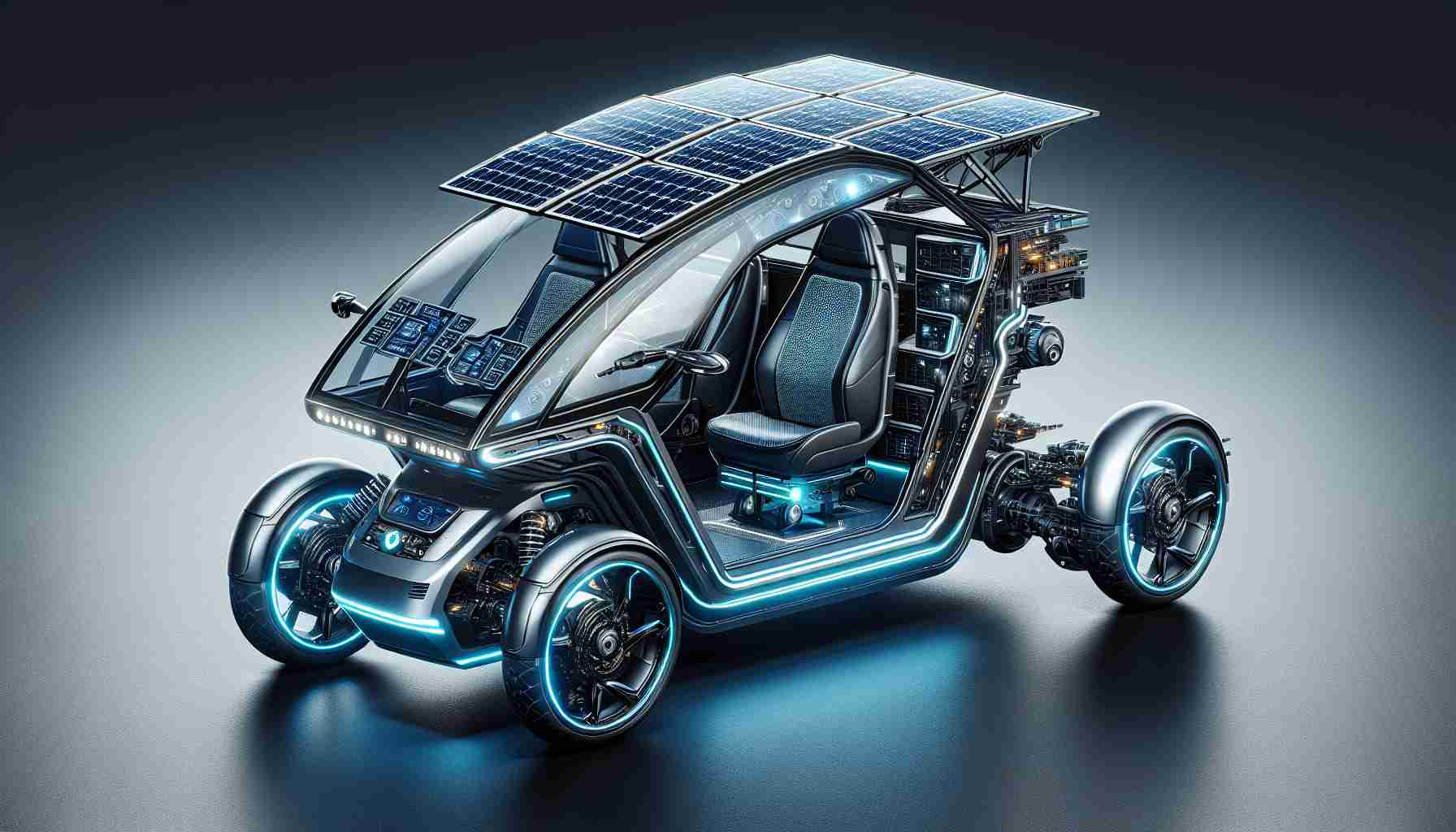- Aptera Motors unveiled a three-wheeled solar hybrid vehicle at CES, showcasing sustainable travel innovations.
- The vehicle features an aerodynamic design that optimizes solar energy, achieving up to 40 miles of solar-powered travel daily.
- Complementary to solar charging, a high-capacity onboard battery extends the vehicle’s range to 400 miles.
- The use of 3-D curved solar panels offers both durability and efficiency without adding extra weight.
- Priced around $40,000, the vehicle has gained significant interest, highlighting a shift towards sun-powered commutes.
Amidst the bustling corridors of this year’s Consumer Electronics Show, a striking marvel captured the imaginations of onlookers—a three-wheeled vehicle gliding confidently on solar wings. Crafted by Aptera Motors, a visionary startup from California, this solar hybrid offers an alluring promise of sustainable and seamless travel.
The gleaming machine, with its sleek, aerodynamic body, evokes imagery reminiscent of science fiction worlds where innovation knows no bounds. As it harnesses the sun’s energy, it not only redefines green automotive technology but also reshapes how we perceive our daily commutes.
Chris Anthony and Steve Fambro, the masterminds behind Aptera, envisioned a vehicle that combines solar efficiency with practicality. The idea sprouted when they realized that covering just the vehicle’s roof with solar panels could yield up to 12 miles of power daily. Imagine their excitement as calculations soared to reach a potential of 40 miles daily when the entire vehicle skin absorbed sunlight.
The vehicle doesn’t rely solely on solar power; it houses a state-of-the-art onboard battery, pushing the range up to 400 miles. This blend of solar ingenuity and battery support means that for many, the daily need to plug in could become obsolete. The implementation of innovative 3-D curved solar panels departs from conventional designs, offering durability without the weight penalty.
Aptera’s ambitious dream finds itself grounded in practicality, with pre-orders buzzing around a $40,000 ticket. For everyday drivers, the revelation is simple yet profound: imagine a future where the commute is powered not by grid electricity, but by the boundless energy of the sun—ushering us into a new era of driving independence.
Revolutionizing Commuting: How Aptera’s Solar Hybrid Car Could Change Your Drive
How Aptera’s Solar Hybrid Car Works
Aptera Motors has crafted a groundbreaking vehicle that utilizes solar panels for supplemental energy, offering a glimpse into the future of automotive technology. The three-wheeled vehicle is designed with solar panels integrated into its roof and body, capable of generating up to 40 miles of range per day solely from sunlight. This innovation is a blend of aerodynamics, lightweight materials, and cutting-edge solar panel technology.
Real-World Use Cases
1. Daily Commuting: Ideal for short urban commutes, the vehicle’s solar contribution means that many users might seldom need to charge from the grid, reducing electricity costs.
2. Eco-Friendly Tourism: Perfect for environmentally conscious travel, the solar hybrid can be used for scenic routes where charging stations are sparse.
3. Remote Area Travel: For regions with abundant sunlight but lacking infrastructure, the vehicle’s solar capabilities shine, offering convenient travel without reliance on traditional fuel sources.
Market Forecasts & Industry Trends
The electric vehicle market has been rapidly growing, with solar-electric hybrids representing a niche yet promising segment. Analysts predict a compound annual growth rate (CAGR) for solar-powered vehicles as technology improves and production scales up. Companies like Aptera are pioneering this space, indicative of the industry’s potential to expand as ecological consciousness rises and technology becomes more cost-effective.
Reviews & Comparisons
Pros:
– Eco-friendly with zero emissions
– Significantly lower running costs due to solar charging
– Impressively long range with combined solar and battery power
Cons:
– Limited seating and cargo space
– Currently priced premium compared to other compact electric vehicles
– Availability limited to certain markets initially
Controversies & Limitations
While the promise of solar hybrids is compelling, there are challenges and skepticisms:
– Efficiency: In regions with less sunlight or during cloudy days, solar contribution will naturally dwindle.
– Market Adoption: High initial costs may deter some potential buyers despite long-term savings.
– Infrastructure: Current cityscapes may need adjustments to accommodate and promote solar-charging vehicle use.
Features, Specs & Pricing
– Base Price: Approximately $40,000
– Range: Up to 400 miles with full battery and solar assistance
– Solar Power Contribution: Up to 40 miles per day
– Design: Aerodynamic and lightweight with a three-wheeled configuration
Security & Sustainability
The vehicle prioritizes sustainability with recycled materials and efficient energy use. Security features include standard industry safety measures, although the lightweight build requires careful design to maintain crashworthiness.
Insights & Predictions
As solar technology evolves, costs will likely decrease, making solar-electric vehicles more accessible. Governments might introduce incentives for solar hybrid vehicles, further accelerating adoption rates.
Tutorials & Compatibility
For potential buyers:
– Charging: Learn optimal parking positions for maximum solar absorption.
– Maintenance: Regular checks for solar panel cleanliness and battery health.
Quick Tips for Prospective Buyers
– Evaluate your average daily mileage to see if Aptera’s solar charge covers your needs.
– Consider local weather patterns to gauge the effectiveness of the solar capacity.
– Check eligibility for government rebates or incentives for eco-friendly vehicles.
For more information on developments in the automotive tech industry, visit Aptera Motors. Stay informed on innovations that blend sustainability with cutting-edge technology.














